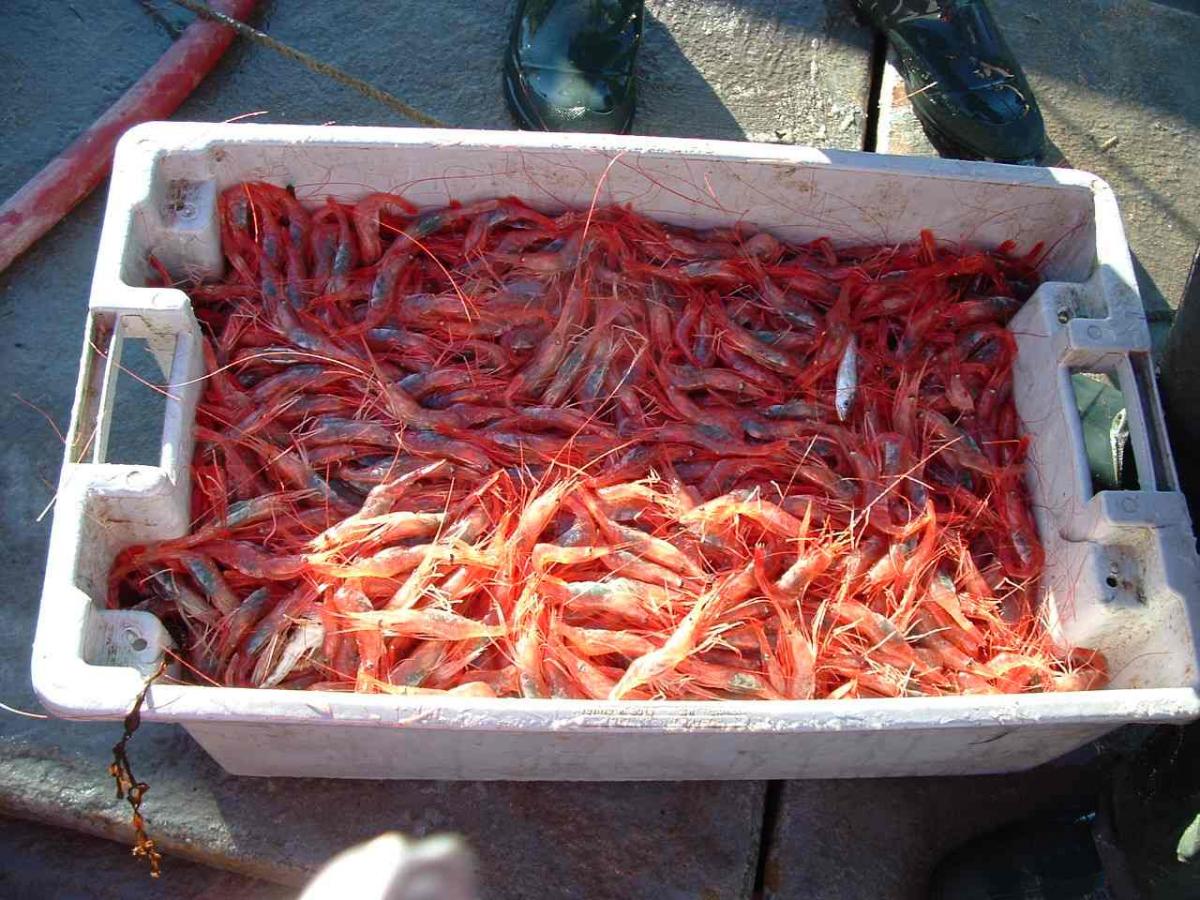Maine Seafood Guide – Shrimp

Species Description
Season
Status
Regulatory Authority
Harvest Method
Recreational Harvest
Health Benefits & Risks
Buying & Preparing
Brands
Certifications
Links
►Species Description
Northern shrimp Pandalus borealis
also known as Maine shrimp, coldwater shrimp, pink shrimp
Wild.
Northern or Maine shrimp are small, pink shrimp found throughout the Arctic, North Atlantic, and North Pacific oceans.
►Season
Traditionally between December and April. No season in 2014, 2015, 2016, or 2017 due to depleted population.
►Status
Shrimp are a short-lived species and sensitive to climate changes, and thus populations, fishing seasons, and quotas fluctuate from year to year. Northern shrimp abundance in the western Gulf of Maine has declined steadily since 2006. According to members of the Atlantic States Marine Fisheries Commission, who regulate the fishery, “the 2016 Stock Status Report indicates abundance and biomass indices for 2012–2016 are the lowest on record” in the 33 years that managers have been collecting data. The fishery was closed during the 2013-2014, 2014-2015, 2015-2016, and 2016-2017 seasons (more from Department of Marine Resources and Fishwatch.gov).
►Regulatory Authority
Atlantic States Marine Fisheries Commission
►Harvest Method
In early winter, when females move close to shore to hatch their eggs, shrimp are harvested from muddy-bottom habitat off the coast of Maine with trawls and pots (traps). See the vessel and gear guide for more information.
►Recreational Harvest
No.
►Health Benefits & Risks
Shrimp are a low-fat, low-calorie source of selenium, but are low in omega-3 fatty acids. Maine shrimp are low in mercury.
►Buying & Preparing
Purchase shrimp from a certified shellfish dealer. Frozen shrimp are still available from Canadian fisheries. Fresh shrimp may be muddy and covered with greenish-blue eggs, signs of freshness easily removed by rinsing and shelling. Their shells are thin and easy to remove and they do not need to be de-veined. Northern shrimp cook very fast—just a minute or two until they turn opaque and curl up. Northern shrimp can be substituted for other shrimp in recipes, but cooking times should be adjusted. Also, Northern shrimp can release a lot of liquid when they cook. An ammonia-like smell means the shrimp have gone bad and should not be eaten.
►Companies, Brands, and Labels
Cozy Harbor
Port Clyde Fresh Catch
►Certifications & Verifications
None
►Links
Maine Department of Marine Resources shrimp page
